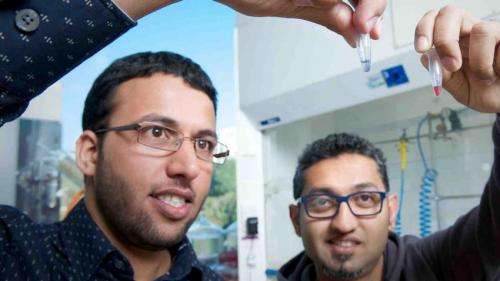Detecting harmful molecules in the environment

Victoria University of Wellington researchers have developed a new technique that can detect environmental levels of oestrogen at the equivalent of detecting one pinch of salt in an olympic-sized swimming pool.
Work by Professor Ken McNatty from the School of Biological Sciences, Dr Justin Hodgkiss from the School of Chemical and Physical Sciences, and PhD students Shalen Kumar and Omar Alsager, has resulted in a tool that will add to knowledge about the presence of oestrogenic hormones in the environment—molecules with the potential to affect human and animal reproductive cycles.
"When oestrogen is in the wrong place at the wrong time, it can be harmful to living organisms including humans," says Dr Hodgkiss.
"It is crucial to be aware if there's oestrogen in the environment, especially as it is not uncommon for water in many countries, including New Zealand, Australia and the United Kingdom, to be recycled. We have no idea how much oestrogenic material is in there."
Another concern, says Professor McNatty, is that the additives that increase plasticity in everyday items such as drink bottles, containers and rubbish bags, can accumulate over time and behave like oestrogen. But, he says, to measure these items repetitively and quickly is very expensive. "The question is, what is safe if you're exposed to these additives for 30 years?"
Currently, the only way to measure the amount of oestrogen in water is to send a sample to a lab for analysis, which is expensive and takes time to get results says Professor McNatty. "With our new sensors, anyone in the field, such as a regional council officer or water board inspector, could add a sample to the test vial and if oestrogen is present, the sensor will change colour giving a yes or no answer in just a few minutes."
Results from the first part of the research, focused on detecting oestrogen and supported by Viclink, Victoria's commercialisation office, have been published in the international journal Biosensors and Bioelectronics.
The researchers will focus next on refining the sensitivity of the sensors to provide information on exactly how much oestrogen is present, and to expand the sensors to target other molecules
"There are a wide range of applications for this versatile technology. Our research will provide an invaluable tool for further research into oestrogen, and other harmful molecules, in the environment," says Dr Hodgkiss.
Journal information: Biosensors and Bioelectronics
Provided by Victoria University of Wellington

















